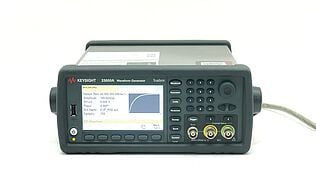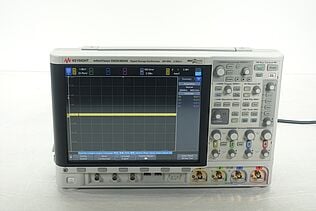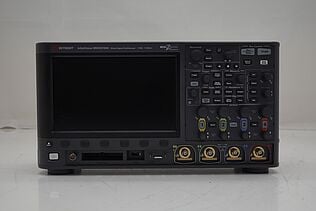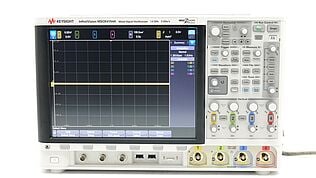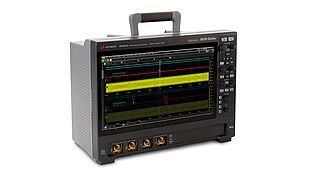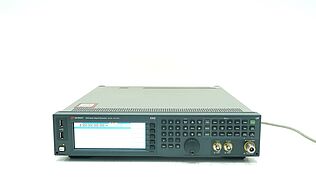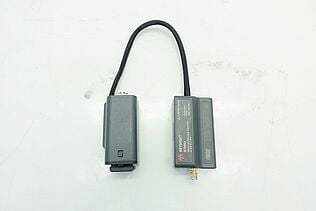- Introduction
- What Exactly is Semiconductor Technology?
- Examples of Semiconductor Technology
- Foundational Semiconductor Devices
- Emerging Semiconductor Applications
- Applications of Semiconductors in Daily Use
- The Difference Between N-Type and P-Type Semiconductors
- N-Type Semiconductors
- P-Type Semiconductors
- Understanding Semiconductor Chips
- What is a Semiconductor Chip?
- Function of Semiconductor Chips
- Applications of Semiconductor Chips
- Importance of Semiconductor Chips
- What is a RF Semiconductor?
- What is a Semiconductor Optical Amplifier?
- Applications of Semiconductor Optical Amplifiers
- The Difference Between an Intrinsic and Extrinsic Semiconductor
- Intrinsic Semiconductors
- Extrinsic Semiconductors
- Knowing More About Fabless Semiconductors
- Semiconductor Materials
- Choosing the Right Semiconductor Material for Your Project
- Electronic Properties
- Conclusion: Ensure Accuracy and Compliance
- Need Semiconductor Testing Tools? Find High-Quality, Cost-Effective Options Here!
- Whenever You’re Ready, Here Are 5 Ways We Can Help You
Have you ever wished for a semiconductor versatile enough to meet every challenge your designs throw at it?
Or imagined components that seamlessly adapt to new technologies, keeping your projects future-proof without needing constant replacements?
For many engineers, these dreams are what drive innovation—and also what make selecting the right semiconductor such a frustrating process.
In this guide, we’ll explore the types of semiconductors, their everyday applications, and how they’re reshaping industries. By understanding their properties and applications, you’ll gain the knowledge to design solutions that meet today’s demands and adapt to future challenges.
What Exactly is Semiconductor Technology?
Semiconductor technology forms the foundation of modern electronics, enabling everything from compact smartphones to advanced medical equipment.
Without semiconductors, the digital world as we know it wouldn’t exist. These materials are vital because they allow engineers to control the flow of electrical current, a fundamental requirement for creating circuits and electronic devices.
Key Characteristics of Semiconductors:
- Middle ground properties: Semiconductors fall between conductors (allowing free flow of electricity) and insulators (blocking electricity).
- Customizability: Engineers can modify their electrical properties through doping, enabling precise control of current flow.
- Versatility: They perform functions like switching, amplifying, and processing electrical signals.
How Semiconductor Technology Works:
- Base materials: Pure materials like silicon or germanium are used.
- Doping: Small amounts of impurities are added to create:
- N-Type Semiconductors: Contain excess electrons for current flow.
- P-Type Semiconductors: Have “holes” (electron deficiencies) that allow current flow in the opposite direction.
- Applications: These modifications enable the creation of critical components such as:
- Transistors: Act as electronic switches for data processing.
- Diodes: Regulate current flow to protect circuits.
- Integrated Circuits (ICs): Combine multiple functions into a single chip.
The Role of Semiconductors in Modern Electronics:
- Automotive technology: Power advanced driver-assistance systems (ADAS) and electric vehicle controls.
- Healthcare: Enable diagnostic imaging equipment and life-saving devices.
- Renewable energy: Convert solar energy into electricity efficiently.
- Communication: Facilitate high-speed data transfer in devices like smartphones and routers.
Understanding how semiconductors work and their role in modern electronics is the first step to leveraging their full potential.
Whether you're designing cutting-edge circuits or troubleshooting device performance, these materials and their technologies are key to achieving reliable, scalable results.
Examples of Semiconductor Technology
Semiconductors are the building blocks of countless electronic devices engineers encounter every day. From foundational components to cutting-edge innovations, these technologies continue to push the boundaries of speed, efficiency, and scalability.
Foundational Semiconductor Devices
- Transistors:
- Function as electronic switches or amplifiers in circuits.
- Crucial for processors, memory chips, and power control systems.
- Diodes:
- Allow current to flow in one direction, protecting circuits and enabling rectification.
- Commonly used in power supplies and signal demodulation.
- Solar Cells:
- Convert sunlight into electrical energy using semiconductor materials like silicon.
- Found in renewable energy applications, including solar panels.
- Integrated Circuits (ICs):
- Combine multiple electronic components into a single chip.
- Enable compact, powerful devices such as microcontrollers, sensors, and processors.
Emerging Semiconductor Applications
- AI Chips:
- Optimized for artificial intelligence and machine learning tasks.
- Provide high-speed computations for applications like autonomous vehicles and data centers.
- IoT Devices:
- Leverage semiconductors for wireless communication, sensing, and data processing.
- Include smart home devices, industrial sensors, and wearable technology.
- 5G Communication Modules:
- Use advanced RF semiconductors to handle high-frequency signals.
- Enable ultra-fast data transfer for mobile networks and connected devices.
Why These Technologies Matter:
Semiconductors have enabled devices to become:
- Smaller: Shrinking device sizes for portability and convenience.
- Faster: Increasing processing speeds for demanding applications.
- More energy-efficient: Reducing power consumption for sustainable operation.
From the foundational to the futuristic, semiconductor technologies are driving innovation across industries. Whether you're designing an IoT sensor or optimizing a solar panel, these devices offer the tools to achieve groundbreaking results.
Applications of Semiconductors in Daily Use
Semiconductors are integral to modern life, powering countless devices we rely on daily. Their versatility and adaptability have made them indispensable in various industries and applications.
- Computing: Semiconductors are the backbone of computers and laptops, driving faster processing speeds and efficient storage. Microprocessors and memory chips allow seamless multitasking and advanced computing capabilities.
- Communication: Smartphones, routers, and 5G networks depend on semiconductor technology for high-speed data transfer and reliable connectivity. RF semiconductors ensure smooth wireless communication in mobile devices and satellite systems.
- Healthcare: Advanced medical equipment like MRI scanners, pacemakers, and diagnostic tools leverage semiconductors for precision and reliability. These technologies improve patient outcomes and drive innovation in healthcare.
- Automotive technology: Semiconductors power electric vehicles, advanced driver-assistance systems (ADAS), and infotainment systems.
- Household electronics: Everyday items like washing machines, refrigerators, and LED lights depend on semiconductors for energy efficiency and functionality. They make home appliances smarter and more durable.
Semiconductors have become a cornerstone of technology, supporting everything from life-saving medical devices to cutting-edge communication systems.
The Difference Between N-Type and P-Type Semiconductors
N-type and P-type semiconductors are fundamental to modern electronics, serving complementary roles in circuit design.
N-Type Semiconductors
These semiconductors are doped with elements that provide extra electrons, making electrons the majority charge carriers.
- Electrical properties: Excess electrons enable a higher flow of electrical current.
- Applications: Commonly used in transistors, diodes, and other components where rapid current flow is needed.
P-Type Semiconductors
These are doped with elements that create “holes” or spaces where electrons are absent. The holes act as positive charge carriers.
- Electrical properties: The movement of holes facilitates a different mode of conductivity.
- Applications: Often used in conjunction with N-type materials in diodes, LEDs, and integrated circuits to manage current flow and switching.
Practical Importance:
The combination of N-type and P-type semiconductors creates junctions critical for diodes, transistors, and other devices.
For example, a PN-junction diode allows current to flow in one direction while blocking reverse flow, ensuring proper circuit operation.
In integrated circuits, the interplay between N-type and P-type materials allows logical functions and switching mechanisms.
| Feature | N-Type Semiconductor | P-Type Semiconductor |
|---|---|---|
| Charge Carriers | Electrons (negative charge) | Holes (positive charge) |
| Doping Material | Elements with excess electrons (e.g., phosphorus) | Elements with fewer electrons (e.g., boron) |
| Conductivity | High, due to free electrons | High, due to movement of holes |
| Applications | Transistors, rectifiers, amplifiers | LEDs, photodiodes, logic gates |
Choosing between N-type and P-type semiconductors depends on the specific requirements of your circuit. Understanding their properties ensures efficient design and optimal performance in electronic devices.
Understanding Semiconductor Chips
Semiconductor chips, also known as microchips or integrated circuits (ICs), are the cornerstone of modern electronics. These chips pack complex circuitry into small, efficient packages, enabling the functionality of nearly every digital device you encounter.
What is a Semiconductor Chip?
A semiconductor chip is a tiny piece of silicon or other semiconductor material, embedded with miniature circuits that perform specific electronic tasks.
- Structure:
- Layers: Chips are made up of multiple layers of transistors, resistors, capacitors, and other electronic components.
- Transistors: The primary building block, transistors switch electrical signals on and off, facilitating computations.
- Interconnections: These connect the components, creating pathways for data and electrical signals.
Function of Semiconductor Chips
- Processing: Chips execute billions of calculations per second in devices like computers, smartphones, and gaming consoles.
- Memory storage: Chips store data and instructions, ranging from temporary memory (RAM) to permanent storage (flash memory).
- Power management: Chips regulate energy consumption in devices, ensuring efficiency and preventing overheating.
- Signal conversion: Convert analog signals to digital formats and vice versa for compatibility across devices.
Applications of Semiconductor Chips
- Computers and phones: Act as processors (CPUs, GPUs), enabling fast and reliable operations for computing tasks.
- Consumer electronics: Power everything from smart TVs to digital cameras and smartwatches.
- Automotive systems: Control advanced driver-assistance systems (ADAS), engine management, and infotainment.
- Healthcare devices: Diagnostic tools, wearable health monitors, and medical imaging equipment.
- IoT and communication devices: Handle wireless communication and data transfer for smart homes, industrial sensors, and 5G devices.
Importance of Semiconductor Chips
- Miniaturization: Chips make it possible to pack enormous processing power into small devices, driving innovations like smartphones and wearables.
- Energy efficiency: Advanced semiconductor chips optimize energy use, reducing power consumption in everything from laptops to electric vehicles.
- Speed: Modern chips can process billions of instructions per second, enabling high-speed data processing and real-time applications.
- Scalability: Chips are foundational for designing modular systems, allowing engineers to add functionality without significant redesigns.
Semiconductor Chips: Backbone of Digital Technology
Semiconductor chips have transformed how we work, communicate, and interact with technology.
From powering the processors in your smartphone to enabling the complex algorithms behind AI and machine learning, they are indispensable.
Engineers rely on chips for their versatility, precision, and efficiency, ensuring seamless performance across industries.
What is a RF Semiconductor?
RF (radio frequency) semiconductors are specialized components designed to operate at high frequencies, typically ranging from 3 kHz to 300 GHz.
These semiconductors are essential for wireless communication, ensuring that devices can transmit and receive signals.
Key Features of RF Semiconductors:
- High-frequency operation: Designed to handle rapid oscillations of electrical signals, essential for transmitting data wirelessly.
- Low noise levels: Minimize signal distortion, ensuring clear communication.
- High power efficiency: Optimize energy use, crucial for battery-powered wireless devices.
- Thermal stability: Perform reliably under the heat generated by high-frequency operations.
Applications of RF Semiconductors:
- Wi-Fi technology: RF semiconductors amplify and transmit signals between routers and connected devices.
- Mobile networks: Serve as the backbone of 4G and 5G infrastructure, powering smartphones and cellular towers for fast, reliable communication.
- Satellite communication: Facilitates high-frequency signal transmission to and from satellites for GPS, weather monitoring, and global broadcasting.
- IoT devices: Support the connectivity of smart home devices, industrial sensors, and wearable technology.
Radar systems: Used in automotive and military applications to detect objects and measure distances.
Why RF Semiconductors Matter
Wireless communication relies on high-frequency signals to transmit data quickly and efficiently. RF semiconductors ensure the integrity and speed of these signals, making them indispensable in modern technology.
Whether you're streaming a video over Wi-Fi, navigating with GPS, or making a phone call, RF semiconductors are working behind the scenes to make it happen.
For engineers designing wireless systems, understanding RF semiconductors is critical for ensuring performance and reliability.
What is a Semiconductor Optical Amplifier?
A Semiconductor Optical Amplifier (SOA) is a device used in optical communication systems to amplify light signals directly, without the need for conversion to electrical signals.
It leverages semiconductor materials, such as indium phosphide or gallium arsenide, to boost the intensity of incoming light.
How Does a Semiconductor Optical Amplifier Work?
- Direct optical amplification: An SOA amplifies light by injecting an optical signal into an active medium where stimulated emission occurs, increasing the signal's power.
- No electrical conversion needed: Unlike traditional amplification methods, SOAs work entirely in the optical domain, minimizing signal distortion and maintaining high data integrity.
- Compact and efficient: Their small size and integration with existing systems make them ideal for modern telecommunications infrastructure.
Applications of Semiconductor Optical Amplifiers
- Telecommunications networks: Strengthen optical signals in fiber-optic cables, allowing long-distance data transmission without significant signal loss.
- Data centers: Facilitate high-speed data transfer between servers, supporting growing bandwidth demands.
- Wavelength division multiplexing (WDM): Boost individual wavelengths in multiplexed optical signals for enhanced network capacity.
Why Are SOAs Important?
In telecommunications and data transmission, maintaining signal strength over long distances is crucial for reliability and speed.
Semiconductor Optical Amplifiers achieve this by amplifying light signals while preserving their inherent characteristics.
This makes them essential for high-speed internet, long-haul communications, and emerging technologies like 5G and edge computing, where robust optical networks are key to success.
The Difference Between an Intrinsic and Extrinsic Semiconductor
Semiconductors are categorized as intrinsic or extrinsic based on their composition and conductivity properties.
Intrinsic Semiconductors
- Composition: Made from pure materials like silicon or germanium, with no added impurities.
- Behavior: Conductivity depends solely on the material's natural properties, with equal numbers of electrons and holes as charge carriers.
- Applications: Rarely used in isolation due to limited conductivity but serve as the base material for creating extrinsic semiconductors.
Extrinsic Semiconductors
- Composition: Doped with specific impurities to improve conductivity.
- Types:
- N-Type: Doped with elements like phosphorus, adding excess electrons for improved electrical flow.
- P-Type: Doped with elements like boron, creating holes that act as positive charge carriers.
- Behavior: Conductivity can be precisely controlled, making extrinsic semiconductors highly versatile.
- Applications: Essential for diodes, transistors, solar cells, and integrated circuits.
Impact on Electronics
The ability to control conductivity in extrinsic semiconductors makes them indispensable in circuit design.
For example, combining N-type and P-type semiconductors forms PN junctions, the foundation of diodes and transistors. This distinction between intrinsic and extrinsic materials allows engineers to design efficient and reliable electronic components.
Knowing More About Fabless Semiconductors
Fabless semiconductors represent a business model where companies focus on designing and selling semiconductor chips while outsourcing manufacturing to specialized foundries.
Unlike traditional manufacturers that handle both design and production, fabless companies rely on third-party facilities for fabrication.
Benefits of the Fabless Model:
- Focus on innovation: Fabless companies prioritize research and development, driving advancements in chip design.
- Cost efficiency: Outsourcing production eliminates the need for expensive fabrication facilities, reducing overhead costs.
- Flexibility: Allows companies to scale operations based on demand without the constraints of manufacturing capacity.
Industry Impact
The fabless model has changed the semiconductor industry by fostering specialization and collaboration.
It allows companies to innovate rapidly while leveraging the expertise of foundries to produce high-quality chips. This approach has led to breakthroughs in fields like AI, IoT, and 5G, making semiconductors more accessible and adaptable to emerging technologies.
Semiconductor Materials
Semiconductor materials form the foundation of modern electronics, with each offering distinct properties that suit specific applications.
Common Semiconductor Materials
- Silicon (Si):
- Properties: Abundant, cost-effective, and reliable.
- Applications: Used in general computing, consumer electronics, and solar cells due to its versatility and low cost.
- Germanium (Ge):
- Properties: High electrical conductivity and sensitivity to temperature changes.
- Applications: Ideal for high-speed transistors and some photodetectors but less common due to cost and availability.
- Gallium Arsenide (GaAs):
- Properties: Superior electron mobility, low noise, and excellent performance at high frequencies.
- Applications: Preferred for high-speed communication systems, satellites, and optoelectronic devices.
Why Material Selection Matters
The choice of semiconductor material directly impacts device performance, cost, and energy efficiency.
For example, silicon is widely used for its affordability, while gallium arsenide excels in demanding, high-frequency applications.
Germanium, though less common, fills niche roles where sensitivity and speed are critical.
Choosing the Right Semiconductor Material for Your Project
Selecting the right material for your design ensures optimal performance and cost efficiency. Each material offers unique advantages suited to specific use cases.
- Gallium Arsenide (GaAs):
- Best for high-speed data processing and communication systems.
- Provides superior signal integrity and operates efficiently at high frequencies.
- Recommended for projects where performance outweighs cost concerns.
- Silicon (Si):
- Ideal for most general-purpose applications, such as microprocessors, memory chips, and solar panels.
- Its affordability and versatility make it the go-to material for budget-conscious projects.
- Germanium (Ge):
- Suitable for high-speed, low-voltage devices.
- Often combined with silicon in hybrid applications for improved efficiency.
Tools for Material Selection
Leverage simulation tools, such as Keysight's online performance calculators, to test how different semiconductor materials behave under your design conditions. These tools help identify the best material for your project based on factors like speed, power consumption, and thermal stability.
Electronic Properties
Semiconductors possess unique electronic properties that make them versatile in modern electronics. These properties can be tailored to suit specific performance needs across various applications.
- Bandgap energy: The energy required to excite electrons from the valence band to the conduction band, affecting conductivity and temperature performance. Silicon, with a 1.1 eV bandgap, is ideal for general applications, while Gallium Arsenide (1.43 eV) excels in high-frequency systems.
- Conductivity: Semiconductors allow controlled electrical flow, positioned between conductors and insulators. Doping improves conductivity by introducing impurities to increase charge carriers.
- Charge carrier mobility: This property measures how quickly electrons or holes move under an electric field. Materials like GaAs with higher mobility allow faster signal processing in high-speed applications.
Optimizing for Applications
Engineers adjust these properties through material selection, doping, and structural design.
For instance, low-bandgap materials support energy-efficient devices, while high-mobility materials improve performance in high-frequency circuits.
These customizations ensure semiconductors meet the demands of technologies from low-power gadgets to advanced communication systems.

Conclusion: Ensure Accuracy and Compliance
Semiconductors power the technologies that shape our world, from everyday devices to cutting-edge innovations.
By understanding their types, properties, and applications, you can confidently navigate design challenges and choose components that align with your goals.
Whether you're dreaming of adaptable solutions, concerned about performance under pressure, or frustrated by complex specifications, the right tools make all the difference.
Keysight’s advanced testing and measurement solutions, such as oscilloscopes and signal analyzers ensure your semiconductors meet the highest standards of performance and reliability.
These tools allow precise evaluation of properties like electrical conductivity, signal integrity, and thermal stability, helping you identify and address potential issues early in the design process.
Need Semiconductor Testing Tools? Find High-Quality, Cost-Effective Options Here!
Whenever You’re Ready, Here Are 5 Ways We Can Help You
- Browse our premium used network analyzers, oscilloscopes, signal analyzers and waveform generators.
- Call tech support US: 1 800 829-4444 Press #, then 2. Hours: 7am – 5pm MT, Mon– Fri
- Talk to our sales support team by clicking the icon (bottom right corner) on every offer page
- Create an account to get price alerts and access to exclusive waitlists.
- Talk to your account manager about your specific needs.



